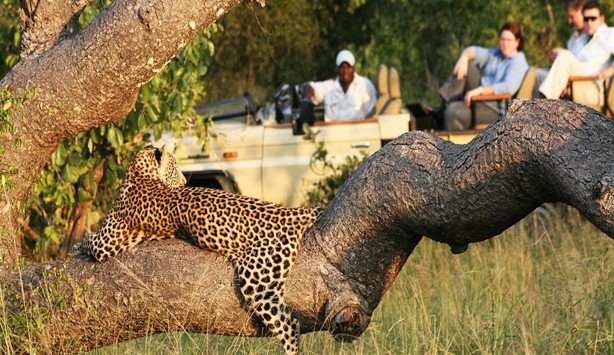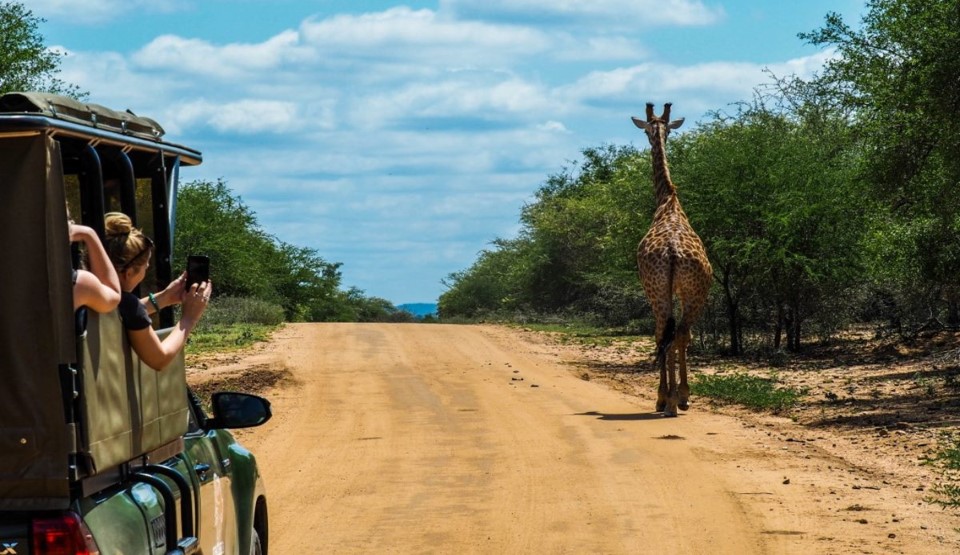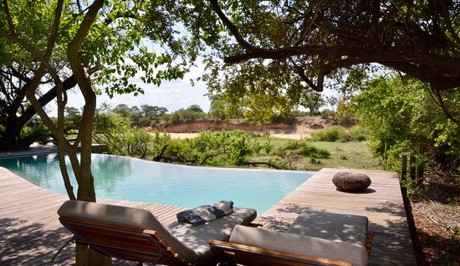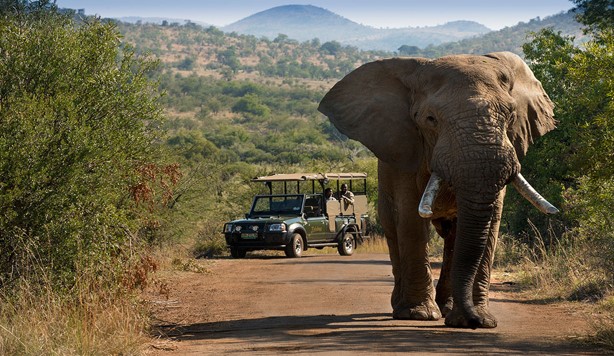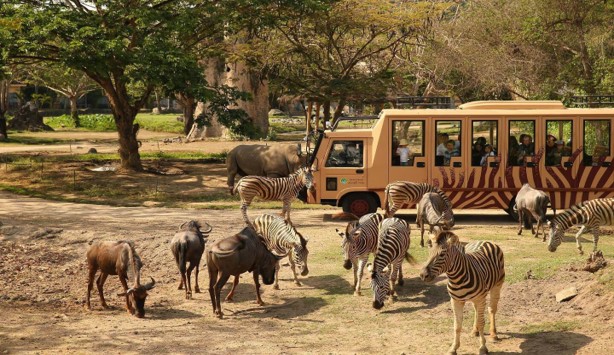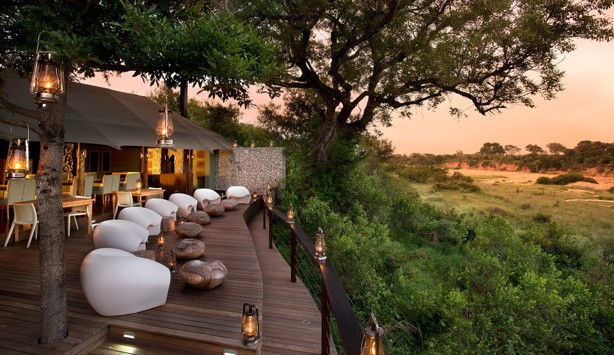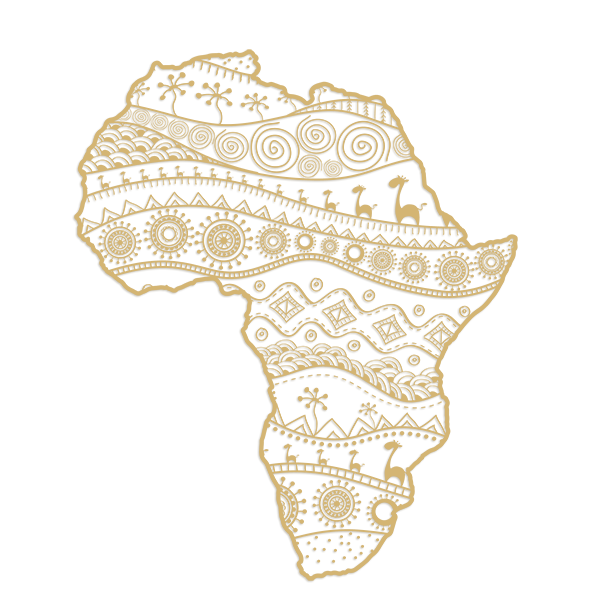
Kruger National Park Information
Country: South Africa

The park was first proclaimed in 1898 as the Sabie Game Reserve by the then president of the Transvaal Republic, Paul Kruger. He first proposed the need to protect the animals of the Lowveld in 1884, but his revolutionary vision took another 12 years to be realised when the area between the Sabie and Crocodile Rivers was set aside for restricted hunting.
James Stevenson-Hamilton (born in 1867) was appointed the park’s first warden on 1 July 1902.On 31 May 1926 the National Parks Act was proclaimed and with it the merging of the Sabie and Shingwedzi Game Reserves into the Kruger National Park.
The first motorists entered the park in 1927 for a fee of one pound.Many accounts of the park’s early days can be found in the Stevenson-Hamilton Memorial Library.There are almost 254 known cultural heritage sites in the Kruger National Park, including nearly 130 recorded rock art sites. There is ample evidence that prehistoric man – Homo erectus roamed the area between 500 000 and 100 000 years ago Cultural artifacts of Stone Age man have been found for the period 100 000 to 30 000 years ago.
More than 300 archaeological sites of Stone Age man have been found Evidence of Bushman Folk (San) and Iron Age people from about 1500 years ago is also in great evidence. There are also many historical tales of the presence of Nguni people and European explorers and settlers in the Kruger area.There are significant archaeological ruins at Thulamela and Masorini There are numerous examples of San Art scattered throughout the park.
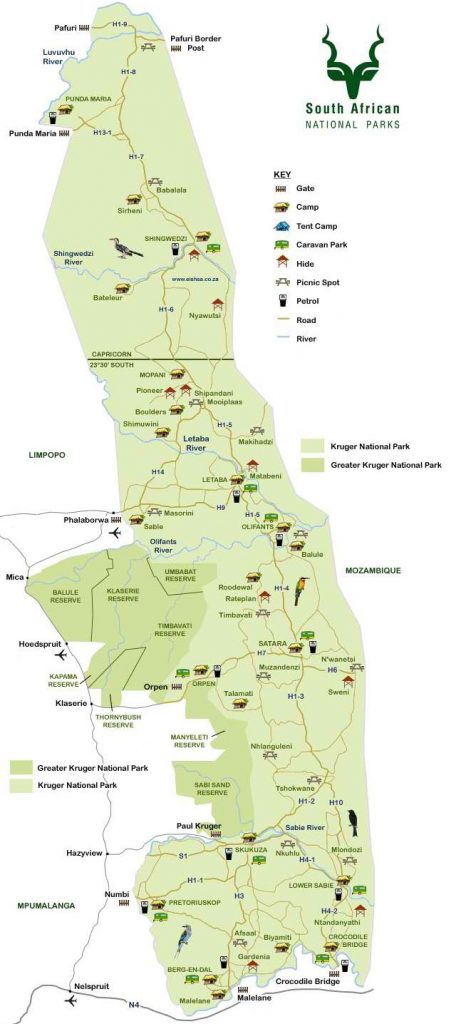
Vital Information
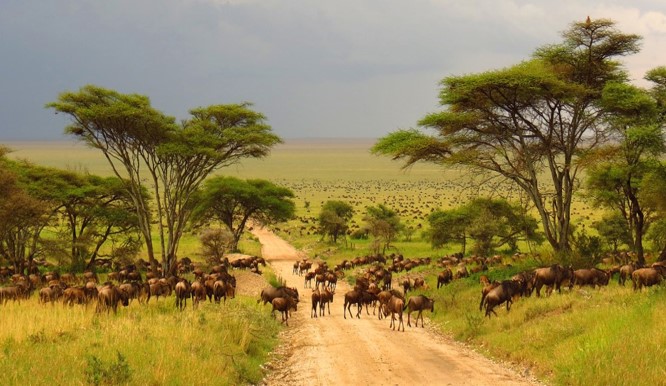
Activities
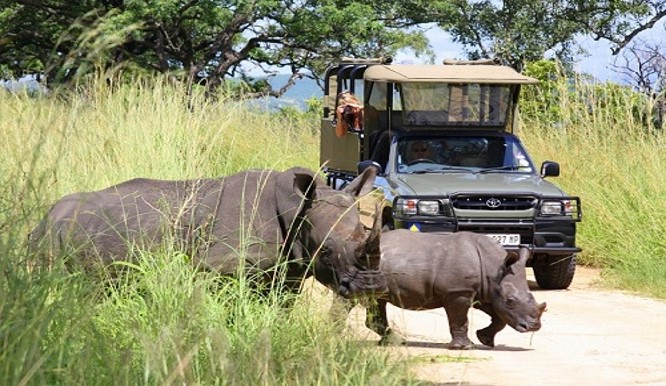
Kruger Park Gates
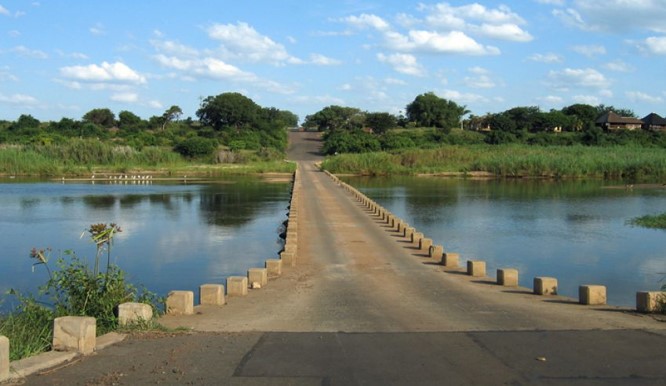
Vital Information
Summer is the rainy season in Kruger Park. The rains fill the rivers and waterholes, resulting in the bushveld looking lush. Game viewing is sometimes a bit more difficult in the summer season because the vegetation is dense, making it bit harder to locate and observe wildlife.
Towards the end of November and early December, Kruger National Park is filled with newborns and spotting wildlife with their young is a memorable Kruger Park safari experience. Birding is excellent during this time as the summer migrant birds arrive.
If you are planning on visiting the Kruger Park during summer we recommend you travel in an air-conditioned vehicle and stay in air-conditioned accommodation. It can get very hot during the day with up to a high of 30 degrees celsius. Camping can be a bit unpleasant, but if you are a die-hard camping enthusiast the heat and rain should not deter you.
Winter
Although some visitors might prefer the lush vegetation of the summer months, the best time for observing African wildlife in Kruger National Park is the dry winter season.
The bushveld is more open allowing for better visibility. The grass is low, the bushes and trees are sparsely leaved and because it is so dry – with no rain – the wildlife will migrate towards the water. Water holes, dams and rivers become a hive of activity and you are more likely to spot wildlife in the morning and evening as they come for a drink of water.
The day temperatures in winter are pleasant but it can get quite chilly during the night-time so make sure you pack something warm when going on your afternoon/night game drives.
November through December:
The summer months in Kruger Park are very hot and humid with either continual rains or occasional afternoon thundershowers. Many young animals are born during this time.
November Temperature: (+/-) 16 – 32 °C
December Temperature: (+/-) 18 – 34 °C
January to April:
These are normally drier months with very hot days. Bird watchers can enjoy the array of migratory birds during this period.
January Temperature: (+/-) 18 – 34 °C
February Temperature: (+/-) 18 – 33 °C
March Temperature: (+/-) 18 – 33 °C
April:
This is Kruger Park’s autumn period and the vegetation starts changing from thick lush green bush to a slightly sparser browning bush. The temperatures start cooling down at night but daytime is still warm. Scattered thunder showers can be experienced in the afternoons.
April Temperature: (+/-) 13 – 28 °C
May to June:
Cold temperatures are experienced at night and at dawn during our winter months. The vegetation becomes totally brown and trees start losing leaves. Visibility during game drives is enhanced due to sparser vegetation.
May Temperature: (+/-) 13 – 28 °C
June Temperature: (+/-) 9 – 26 °C
July to August:
This period is very dry in the bush with very cold night temperatures and therefore chilly during the early morning and late afternoon game drives. Game viewing is generally fantastic as the visibility is good and the game is concentrated around any water source.
July to October is the end of the dry season and the malaria-carrying mosquitoes are dormant.
July Temperature: (+/-) 9 – 26 °C
August Temperature: (+/-) 12 -28 °C
September to October:
Spring is the height of the dry season with hot dry winds and colourless, sparse vegetation. Because the rivers and dams are low, high concentrations of game can be viewed at these areas and game viewing in general is good. The first rains may start towards the end of October and the signs of spring and a new wet season are evident.
September Temperature: (+/-) 12 – 28 °C
October Temperature: (+/-) 16 – 32 °C
To ensure a safe and joyful trip through our parks, kindly adhere to the rules and regulations under the Protected Areas Act. Transgression of the rules and regulations as summarized below may result in prosecution and or penalties.
1. INDEMNITY: Guests entering national parks will be required to sign document indemnifying SANParks against any claim, action, judgment, costs and/or expenses which may be made against SANParks.
2. IDENTIFICATION: Please ensure that acceptable means of identification are taken along when visiting parks. This does not only apply to the drivers of vehicles but could be requested of all adults that enter or visit parks.
3. CONSERVATION FEES: Daily conservation fees are payable for every day/ night stayed in national parks. The acquisition of a Wild Card is available as an alternative to paying daily conservation fees.
4. COMMUNITY LEVY: SANParks will be implementing a 1% Community Levy on all reservations (overnight and activity products) arriving on or after 1 June 2012. This will be used to fund projects that support surrounding communities in bettering their livelihoods. For more information please view www.sanparks.org
5. STAY IN YOUR VEHICLE – In most of the national parks there is a possible threat from dangerous animals. In such parks guests may only alight from vehicles in designated areas. No part of your body may protrude from a window or sunroof and doors should remain closed at all times;
6. THE MAXIMUM SPEED LIMIT – Please take careful note of the speed limits applicable in the various areas of the parks. Note that not all roads are accessible to caravans and/ or vehicles exceeding a certain mass, type or size.
7. ALCOHOL: The consumption of alcohol in public areas is prohibited. Day visitors are prohibited from entering Kruger National park with any alcohol in their vehicles.
8. DRIVE SAFELY – General rules of the road apply within the parks. It is an offence to drive on South African roads without a recognized driver’s license or under the influence of alcohol. Driving or operating any vehicle in a reckless or negligent manner or in a deliberate disregard for the safety of a person, animal or property is a serious offence and can result in a
summons being issued Driving a vehicle in a manner that constitutes a nuisance, disturbance,
inconvenience or danger to any other person may also be subject to a summons being issued.
9. ADHERE TO GATE TIMES – Gate times must be strictly adhered to. Please take note of the different times that apply at gates and also camps and lodges within the parks. Guests must plan their travelling thoroughly and make adequate provision for contingencies. After hours driving is not allowed and could result in a summons being issued.
10. OVERNIGHT VISITORS – Guests are only allowed to stay at a booked and recognized overnight facilities and must report to the relevant reception before occupying acommodation or camping;
11. AGE RESTRICTIONS: For safety reasons some activities conducted in park have age restrictions. Please take cognizance of these in order to prevent disappointments.
12. DEPARTURE TIMES – All accommodation and camping sites may be occupied from 14:00 on day of arrival and must be vacated by 10:00 on the day of departure;
13. DRIVING AREAS – Vehicles must remain on the designated roads at all times and off-road driving or driving on closed or no-entry roads is a serious offence. In many areas, overnight facilities are to be accessed only by booked overnight guests;
14. FEEDING OF WILDLIFE IS PROHIBITED – The feeding or intentional disturbance of wildlife is a serious offence. By feeding any wildlife you are potentially SIGNING THEIR DEATH WARRANT, AS THEY MAY BECOME DEPENDENT AND OFTEN BECOME AGGRESSIVE AND DANGEROUS, AND THUS HAVE TO BE EXTERMINATED;
15. FLORA & FAUNA – No plant, animal, wildlife or any natural or cultural items may be removed from the park without permission. To cut, damage, destroy or be in possession of any plant or part thereof, including dry wood or firewood is a serious offence. Importing of any specimen of an alien or listed invasive species into a national park is prohibited;
16. VEHICLE RESTRICTION – There are restrictions to the type of vehicle that may enter national parks. Please take careful note of vehicle restrictions applicable to the different roads and areas of the parks.;
17. PETS– No pets (dogs, cats, birds or any other) may be brought into a Park. Transgressors will be dealt with firmly, issued with a summons and the pets will be destroyed. Guide dogs for visually impaired guests are one exception, but only in consultation with park management and if the owner has the necessary inoculations and permits as ordained by the state veterinary department;
18. LITTER-FREE ZONE – Littering is prohibited. Deposit or leaving of any litter except in receptacles for that purpose will result in a fine;
19. DECLARE FIREARMS AT GATE – All firearms/dangerous weapons of any sort, any explosive, trap or poison must be declared upon entry, and firearms will be sealed;
20. NO KILLING OF ANIMALS – Poaching and killing or injuring of animals is strictly prohibited;
21. FIRE HAZARD– Starting or causing of any fire, whether it be intentional or unintentional other than in a fireplace or container purposely made available is strictly prohibited and will result in a summons being issued
22. SMOKING– Please take note of the smoking regulations applicable in
the parks
23. BEHAVIOUR – Behaving in an offensive, improper, indecent or disorderly manner including the playing of any radio, compact disc player, music system, musical system or instrument, or in any way cause of any noise in any manner likely to disturb any species or specimen or other person is strictly prohibited and will be fined if not adhered to. The hindering, intimidating or obstructing of an authorized official in the execution if his/her duties or the performance of his/her functions will not be tolerated and is subject to a penalty. Violation, refusal or failure to obey or comply with any prohibition, request or instruction imposed by these regulations or by the management authority or authorized official will result in prosecution;
24. BICYCLES: Please enlighten yourself with the rules and regulations
applicable to the use of roller-skates, skateboards, bicycles and motorbikes for the park/s that you will be visiting as there are restrictions in some of the parks;
25. BEWARE MALARIA – Kruger and Mapungubwe National Parks fall within a
malaria zone. A 24hour malaria hotline is available on 0822341800 and where
relevant, please consult your medical practitioner.
26. PARK SPECIFIC INFORMATION – Kindly familiarize yourself with the
general conditions prevalent in the park you are going to visit by visiting the
website at www.sanparks.org and link onto Parks A-Z as there may be vital information contained therein to assist with your visit.
There are daily flights from Johannesburg to Phalaborwa Airport, Hoedspruit Airport and the new Kruger/Mpumalanga International Airport (KMIA) located between Nelspruit and White River. KMIA also receives daily flights from Durban and Cape Town, while there is also a flight from Cape Town to Hoedspruit. The Skukuza Airfield, formerly used for daily commercial flights from Johannesburg is no longer open for commercial flights. No aircraft may land at Skukuza or any other landing strip within the park without prior permission from the Park Director.
Fly with SA Express from Johannesburg to Hoedspruit if you are going to be visiting Orpen, Maroela, Talamati, Tamboti, Satara or Roodewaal Rest Camps. Flights depart twice a day, every day, in both directions.
Fly with SA AirLink from Johannesburg to Phalaborwa if you will be visiting Shimuwini Boulders, Letaba, Olifants or Balule Rest Camps.
SA AirLink flies direct to Kruger International Airport from Durban once a day, five days a week, and from Cape Town once a day, six days a week. These flights are best for those travellers visiting camps in the South of Kruger Park.
Scheduled daily flights from Cape Town, Johannesburg and Durban, seven days a week and several times a day allow you to catch a connecting flight from Johannesburg to Kruger Park International – providing for more flexible travel arrangements. These flights are best for travellers visiting camps in the south of Kruger Park. such as Berg en Dal, Biyamiti, Crocodile Bridge, Malelane, Lower Sabie, Skukuza, Jock Safari Lodge, Lukimbi Safari Lodge or Tinga Game Lodge
Rands and cents
· The rand is divided into 100 cents
· Coins come in denominations of 5c, 10c, 20c, 50c, R1, R2 and R5
· Notes come in denominations of R10, R20, R50, R100 and R200
· Travellers cheques can be exchanged in banks, bureaux de change and some hotels. It is suggested you bring them in hard currencies.
· Money can also be withdrawn at automated tell machines (ATM) of which there are many countrywide.
· South Africa’s ‘big 4’ banks are Absa Bank, First National Bank, Nedbank and Standard Bank.
· Banking hours are generally 09h00-15h30 on weekdays and 08h30 – 11h00 on Saturdays.
· All major credit cards are accepted in the country, particularly MasterCard, Visa, American Express and Diners Club. Be aware, however, that you can’t purchase fuel on a credit card.
Most retail purchases carry a VAT levy of 14%, which is refunded to foreign tourists at departure points, subject to stipulated amounts spent, completion of the necessary forms and presentation of original tax invoices.
Tipping is widely practiced in South Africa. Here is some information on South African tipping.
- In restaurants and bars, 10% – 15% is the accepted tipping standard.
- Parking attendants and security guards are common in parking lots and at roadside bays. They generally ask if they can watch your car while you are going about your business – if you agree, a tip of R2 -R5 and up should be offered, depending on the length of your stay.
- In South Africa we still have the luxury of petrol attendants at gas stations to fill up our vehicle tanks, check oil, water and tyre pressure, and clean the windscreens. How much to tip for this special South African service? From R2 up.
- The going rate for porters at airports is around R5 -R10 per piece of luggage.
- South Africa, you’ll soon see, has a tradition of roadside newspaper vendors. It’s custom to give the seller a few cents – rounding off the cost of your newspaper should be sufficient.
- Tourist guides and coach drivers are tipped at the end of the day. On a group day tour (7 seater vehicle) there is usually a single driver/guide. On coach tours, you would normally have a driver and a guide. Recommended tip is usually R20.00 per person on a day tour and R30.00 per person per day on overland and local coach tours. For private tours, R100 per person per half-day tour and R150 per person per day for a full-day tour is the norm
- You’ll soon find your way around tipping etiquette in South Africa – it’s easy as its usually well-received.
For the summers, bring clothes that are cool and comfortable, along with an umbrella or rain jacket, as this is when most of the country gets rain. A light jacket or wrap is a good precaution. Don’t forget a swimming costume.
- The winters are generally mild, comparing favourably with European summers. But we do get some days when temperatures sky-dive, especially in high-lying areas such as the Drakensberg, so be prepared with jerseys and jackets. If you are going to the Cape, rain gear will be needed in this season.
- Always bring a hat – the sun can be strong even in the winter months. Make sunglasses, a hat and sun block a firm part of your skincare kit.
- Walking shoes are a good idea all year-round, with warm socks in the winter.
- If you are doing business in the country, business attire may be called for, although some sectors of the corporate world e.g. media for example tend to dress down these days.
- For game viewing, a couple of neutral-toned items will be useful, but there’s no need to go overboard and kit yourself out like David Livingstone, out to explore Africa for the first time.
- For the evening, if you are dining at an upmarket restaurant or seeing a show, go the smart-casual route.
Leave some room in your suitcase so you can purchase some South African clothing; information on local designers can be obtained from the web. Look out for local labels like Hip Hop, Stoned Cherrie, Maya Prass, Eboka and more.
The Department of Water Affairs and Forestry recently stated that the country’s national standard compares well with the World Health Organisation’s standards. The responsibility to provide clean water rests with locally-based Water Services Authorities, who regularly monitor the quality of drinking water in South Africa.
Tap water undergoes treatment which ensures it is free of harmful micro-organisms and contaminants. In some areas, South African drinking water is rich in minerals, and may involve a bit of getting used to.
Avoid, however, drinking water from streams and rivers, especially in areas where there is human habitation. These may carry water-borne diseases. But if you encounter an unpolluted mountain steam, a drink should be most refreshing.
Should you find yourself in the unlikely position of not having clean water on hand, contaminated water can be disinfected by boiling for 10 minutes, or adding a teaspoon of bleach per 25 lites or a teaspoon of chlorine granules per 200l. In both the latter cases, allow the water to stand for 2 hours. Another method is to expose water to direct sunlight for at least 6 hours in a transparent container with a small airspace, shaking after filling and every hour after that.
Some tap and natural water may have a slight brown tinge from humic acid, which is harmless and does not affect drinking water quality in South Africa.
Daily Conservation Fee
Valid from 1 November 2013 to 31 October 2014
| South African Citizens and Residents (with ID): | R62 per person, per day R31 per child , per day |
| SADC Nationals (with passport): | R124 per person, per day R62 per child, per day |
| Standard Conservation Fee (Foreign Visitors): | R248 per adult, per day R124 per child, per day |
Note: All Prices VAT inclusive and all tariffs in South African Rand
Tariffs subject to alteration without advance notice
Wild Card
Alternatively guests can purchase a Wild Card from the entrance gate which will, for a once off payment, give them access to the Kruger National Park for 365 days from date of purchase. The card comes in three variations for
- Individual – guests over 18 years of age
- Couple – two people over 18 years of age
- Family – two adults and children under 18 years of age
Local residents have the choice of buying one of two variants of the Wild Card: the Bushveld Cluster card, which can be used in Kruger, Mapungubwe, Marakele and Golden Gate; or the All Clusters card that is valid for all national parks. Foreign nationals also have access to a wild card that works on the same principle, and is valid for all national parks.
Wild Card Pricing Structure
Read more about the Wildcard here.
Gate Hours
| Gate Times | Jan | Feb | Mar | Apr | May | Jun | Jul | Aug | Sep | Oct | Nov | Dec |
| Entrance Gates Open | 05:30 | 05:30 | 5:30 | 06:00 | 06:00 | 06:00 | 06:00 | 06:00 | 06:00 | 05:30 | 05:30 | 05:30 |
| Camp Gates Open | 04:30 | 05:30 | 05:30 | 06:00 | 06:00 | 06:00 | 06:00 | 06:00 | 06:00 | 05:30 | 04:30 | 04:30 |
| All Gates Close | 18:30 | 18:30 | 18:00 | 18:00 | 17:30 | 17:30 | 17:30 | 18:00 | 18:00 | 18:00 | 18:30 | 18:3 |
Entrance Gates Telephone Numbers
| Entrance Gate | Telephone Number |
|---|---|
| Crocodile Bridge Gate | +27 (0)13 735 6012 |
| Giriyondo | +27 (0)13 735 8919 |
| Kruger Gate | +27 (0)13 735 5107 |
| Malelane Gate | +27 (0)13 735 6152 |
| Numbi Gate | +27 (0)13 735 5133 |
| Orpen Gate | +27 (0)13 735 6355 |
| Pafuri Gate | +27 (0)13 735 5574 |
| Phabeni Gate | +27 (0)13 735 5890 |
| Phalaborwa Gate | +27 (0)13 735 6509 |
| Punda Maria Gate | +27 (0)13 735 6870 |
Where to take a break…
All the main rest camps have day visitor areas. There are also many picnic spots and other visitor get out points distributed throughout the park. At the picnic spots visitors can (for a nominal fee) hire gas skottels (outdoor elevated frying pans) to cook meals on. These pans are cleaned by the attending staff, thus meaning people don’t have to worry about carrying
Sightings
There are so many creatures to see and sightings of rare species can be the highlight of your trip! Keep up to date with the movements of the wildlife in the Kruger National Park by consulting the sightings map at reception, it is updated daily!
5 Things To Seek
- The Big Five – Buffalo, Elephant, Leopard, Lion and Rhino.
- The Little Five – Buffalo Weaver, Elephant Shrew, Leopard Tortoise, Ant Lion and Rhino Beetle.
- Birding Big Six– Ground Hornbill, Kori Bustard, Lappet- faced Vulture, Martial Eagle, Pel’s Fishing Owl and Saddle-bill Stork.
- Five Trees – Baobab, Fever Tree, Knob Thorn, Marula, Mopane.
- Natural/Cultural Features – Letaba Elephant Museum, Jock of the Bushveld Route, Albasini Ruins, Masorini Ruins, Stevenson Hamilton Memorial Library, Thulamela.
Swimming Pools
Swimming pools for day visitors are available at Skukuza Day Visitor Site as well as at Letaba Day Visitor Site.
Activities
Your knowledgeable guide will interpret the bush and give you a detailed explanation of the animal’s behaviour. See the Big Five as well as a diverse array of other animals and birdlife from the Steenbok to the mighty African Elephant. Birders are spoilt as the Kruger is one of the best birding regions in South Africa.
Sunset drives
This activity leaves before the sun sets and gets back once the sky is dark. Experienced guides drive the groups. Inquire at the reservations offices or at the camp you are staying in, about going on this drive.
Night Drives
Take part in the nocturnal activities of Kruger’s secretive creatures. Experienced guides drive the groups. Inquire at the reservations offices or at the camp you are staying in, about going on this drive. The sunset drive departs at 17:00 and lasts at least 3 hours.
Morning drives
Leave at around 04.30 in summer and 05.30 in winter. Clients are to confirm with Reception the previous night when they book in to their accommodation. As per day walks, accommodation must be booked for the previous night at the camp, as walks/drives leave before the gates open officially. The drive’s duration is 3-4 hours.
Up to eight guests are taken to interesting places in the surrounding wilderness areas adjacent to most of the camps. The walk itself is relaxed and experienced and armed guides use their knowledge of the bush to explain natural wonders.
Trained field guides with backup rifles take groups of up to 8 people out into the bush for a few hours.They track rhino, elephant and lion on foot and learn and observe fascinating facts about the African bush.Guests should wear: comfortable walking shoes or boots,clothing applicable to the prevailing weather conditions andbring their own cameras and/or binoculars.
No children under 13 allowed.Accommodation must be booked for the previous night at the camp.Form more information, contact the camp reception
A once-in-a-lifetime eating experience is a bush braai (BBQ) deep in the Kruger National Park bush, surrounded by the African night and all its nocturnal animals.
Enjoy a superbly presented bush braai in the middle of the Kruger National Park. First, you enjoy the thrill of a night safari in an open vehicle with powerful spotlights to see the predators and nocturnal animals that come out to forage or hunt for food.
Then a wonderful lantern-lit buffet and bristling campfire greet you deep in the bush, surrounded by the velvety darkness of the African night and the brilliant stars in the sky. There is no surround-sound quite like the African bush at night – the occasional lion roar or laughter of the hyenas or excited bark of jackals!
The food is grilled on open fires. A variety of meat and sausage is on offer, together with delicious vegetables and a variety of salads. Freshly prepared deserts and coffee or tea complete a wonderful evening. A cash bar facility is also available.
An armed field guide protects you from the lions that may roar nearby! After dinner, you explore the African night on your way back to Tingala Lodge.
Kruger Park Gates
There are many fine old baobabs in the surrounding landscape. The Limpopo River runs in a parallel arc to the north of the road, but is not visible. There are a series of pans along the Limpopo which are important feeding grounds in summer for migrant water birds. Access to the pans is restricted to guests at The Outpost and Pafuri Game Lodge.
Pafuri Gate takes one directly into the northern sandveld between the Limpopo and Luvhuvu Rivers. This area is one of the most ecologically diverse parts of the Park, incorporating a variety of vegetation types and microclimates. The shrub mopane to the east of the H1-9 is one of the driest localities in Kruger. The vegetation here is intriguing as it is a mixture of South African lowveld and tropical African woodlands.
Dominant trees in this part of the sandveld are the mopane, various bushwillow species, silver cluster-leaf and white syringa trees. They form a fairly dense blanket of vegetation between the protruding sandveld koppies. There is not much game along the H1-9 until one gets closer to the Luvuvhu River where there is rich and diverse animal life.
Punda Maria Gate is the direct access point into far northern Kruger from Gauteng. Set in mixed sandveld woodlands below Thulamila Koppie (not to be confused with Thulamela Heritage Site near Pafuri), Punda Gate has been upgraded to cater for the increase in tourist traffic to the north.
The surrounding woodlands are a mixture of bushwillow and marula with a bit of mopane. There is a Day Visitors’ Centre a few hundred metres along the H13-1, a recommended stopping point to acclimatise to the Park and learn about the natural and human history of the far north. Elephant usually browse along this road. Although there are lion in the area, they are not often seen.
In 1981, three workers from Punda broke all the Park rules by arriving late at the gate from their weekend leave. They persuaded the guards to let them through and rode off into the dark on their bicycles on the nine-kilometre trip to Punda Camp. Only two of them arrived.
The shocked survivors described how a lion had leapt out of the dark at the lead cyclist but missed him. The lion then went for the second bicycle – on which two of the men were riding. The man on the back – Louis Mathye – fell off as his terrified friend accelerated away, pedalling for his life. Punda’s head ranger, Louis Olivier, and several assistants then raced back along the road and found a semi-mutilated black-maned lion tearing at Mathye’s dead body.
Olivier shot it at once. When they examined the animal, they found it had been starving to death – it was missing the lower part of its left hind leg, presumably caught in a snare – and had probably gone after human prey as a desperate option.
Its all in the Name
The name Punda Maria is a bastardisation of the Swahili word for zebra, which is punda miliya. The name of the camp was coined in 1919 by the first ranger in charge of the area, JJ “Ou Kat”Coetser, who named it after his wife, Maria.
She apparently hated the rigours of living in such an isolated part of the country and had a predilection for striped dresses. Coetser, himself, was fired as a ranger for shooting animals and was eventually killed by a bull elephant near the Limpopo River.
Stevenson-Hamilton never had much time for Coetser who he described as a “gasbag”. The Parks Board renamed the camp and the gate as Punda Milia under the impression that it had been a spelling mistake and that zebra were the first animals seen in the area.
After representations from Coetser’s family in 1979, the original name was restored.
The Phalaborwa Gate opened in June 1961. An average of 180,000 visitors (approximately 55,000 vehicles) per annum, enter the Park via the Phalaborwa Gate. This means about 15,000 visitors per month but these figures fluctuate during season.
Orpen gate is 490km from Johannesburg and provides immediate access the Central region of the Kruger National Park. The open grasslands in this region of the Kruger support huge herds of antelope, which in turn, support many predators. Lion sightings are common in this Central stretch, as half of the Kruger National Parks lions live here.
Because driving over 40kmph is not permitted in the park, a journey from North to South takes in the region of 10hours of driving time. This makes it crucial to plan trip carefully. The gates close at dusk, as driving is not permitted inside the park after dark. For animal safety, driving inside the park is at a snails pace, and injuring an animal is not taken lightly
JH Orpen, a surveyor and member of the National Parks Board helped sponsor boreholes for the park. His wife Eileen bought up seven farms immediately to the west of Rabelais gate during the 1930s and 1940s and donated them to the Park, thereby extending the total area by almost 24 500 hectares.
When the entrance to the Park was moved 10km (6 miles) to the west of Rabelais in 1954, and a new rest camp was established beside the gate, it was named in honour of the Orpen family. The closest airport to Orpen is Eastgate Airport that is situated in Hoedspruit. The airport is approximately 68 km from Orpen Gate.
Paul Kruger Gate is the closest entrance to Skukuza and the quickest way to get in and out of the Park from Kruger’s “capital”. One is confronted by the large, somewhat controversial bust of Paul Kruger by sculptor Coert Steynberg as one crosses the Sabie
Oom (uncle) Paul scowls over the Sabie River, having survived the politics of the new South Africa and attempts to have the bust removed in the interests of political correctness. The former president of the Transvaal Republic was a fervent Afrikaner nationalist and racist to boot – but he was also an anti-colonialist who had environmental foresight and a love for the bush.
Whatever one’s view may be, his name has become synonymous with the South African wildlife experience, and tourism authorities are understandably loath to tamper with the destination branding.
The gate is on the Sabie River which is the dominant watercourse in southern Kruger. The Sabie is known for its hippos and crocodiles which lie log-like on the sandy river banks, or cruise the mid-stream with just their eyes poking above the water. The Kruger Gate bridge is a good birding spot with the rare Pel’s fishing-owl recorded along this stretch of the Sabie at sunset.
Imagine the severity of the floods of 2000, when Paul Kruger Bridge was actually under water! The floods had their lighter moments. Bruce Bryden recalls the incredulous sight of a shrieking baboon clinging surfer-style to a log that was swept down the river – the log hit the bridge and the baboon escaped onto dry land.
Phabeni Gate is the best way to get into Skukuza from Gauteng. Phabeni Gate was constructed in 2002 to ease entrance into the Park for people coming from Johannesburg or Pretoria via Hazeyview.
Its African architectural style embodies new South Africa ambience and the 3 indigenously themed rondavels (huts) at the gate are an interesting contrast to the usual thatch and brick aesthetic of most buildings in the Park
Numbi Gate is one of the loveliest entrances into the Kruger Park because its higher altitude gives you a sweeping vista over the lowveld to the east and the granite foothills to the north and south.
Numbi gate in the South West of the Park and is one of the most convenient ways to access the park from nearby Nelspruit. Numbi gate is only 428km from Johannesburg.
Although the Southern Region of the Kruger Park is relatively small, it is the busiest section of the national park. The Southern Kruger’s popularity is often said to be simply because it is the most accessible region of the reserve, but the truth is that this is also where the best game viewing is to be had. This region, easily accessed via the Numbi Gate, is greener than the northern Kruger and sustains a wide variety of game in great numbers.
For animal safety, all driving inside the Kruger Park is at a snails pace, and injuring an animal is not taken lightly. Because driving over 40kmph is not permitted in the Kruger National Park, a journey from North to South takes about 10 hours of driving time. This makes it crucial to plan your trip into the Kruger very carefully. All gates close at dusk, including Numbi, and no driving is permitted inside the park after dark.
When you drive through Malelane Gate, you will be entering the core original reserve, where Kruger Park’s first warden, Colonel James Stevenson-Hamilton was placed in 1902. It was his job to create a home for the wildlife where no one could hunt them. There are a few routes you can follow. These routes will guide you to restcamps and some game viewing spots.
Entering Kruger through Malelane Gate is like taking a trip back in time. Behind you lies the pumping heart of South Africa’s subtropical export industry based on the growing and processing of citrus, sugar, avocados, bananas, mangoes, litchis, nuts and vegetables.
Before you is the pristine environment as it existed before the economic development of the lowveld.
Malelane Gate is on the Crocodile River, about 50km upstream from Crocodile Bridge. Be warned, it is one of Kruger’s busiest gates and there are often long queues of cars waiting to get into the Park at weekends and during school holidays.
Malelane has been a river crossing for hundreds of years and takes its name from the Malelane Regiment of King Mswati II of Swaziland which was stationed here in the 1850s when the area was under Swazi control. Mswati’s regiments conducted regular forays into present-day Kruger during the mid-19th century and, at points, his influence extended as far as southern Zimbabwe and central Mozambique. Many of the names in southern Kruger are Swazi in origin, while Shangaan names dominate further to the north.
Closing Time for all Gates October to February: 18h30
March to April: 18h00
May to July: 17h30
August to September: 18h00Opening Time for Entrance Gates
October to March: 05h30
April to September: 06h00
Crocodile Bridge Gate is the most eastern entrance to Kruger National Park. Crocodile Bridge Gate can be entered in from the N4 road. The N4 travels along Nelspruit and Malelane into Komatiepoort. It is one of the hottest areas, going over 40 degrees C (104 degrees F) in summer. It’s also in close proximity to the border gate between South Africa and Mozambique
Crocodile Bridge Gate is named after the Crocodile River. For those who are heading into the south-eastern section of the Park, Crocodile Bridge is the most direct way of doing so. With Crocodile Bridge having a high concentration of game, wildlife viewing opportunities are high and exciting.
A short distance from the gate, you will find Crocodile Bridge Camp – equipped with a petrol (gas) station, essentials and food. Please note that this camp usually floods during heavy rainfall.
A highlight is that Crocodile Bridge is Rhino territory, the white Rhino is often seen in mixed woodland while the shy black Rhino stays deep in the thorn thickets
